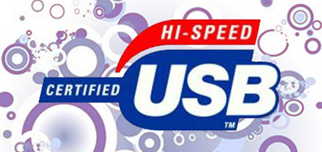
USB Flash Drives (also known as a memory stick or pen drive)A flash drive is a compact storage device that is used to transfer data between computers and other digital products. They have become very popular in the last five years as a convenient way to save files quickly and safely. With almost all computers having USB slots they are now being used extensively throughout the world. A branded memory stick can be carried on a key chain, around your wrist, or just an integral part of a businessman’s computer tools. Their capacity has now risen to an incredible 256Gb.
Using a USB Flash Drive
A flash drive is easy to use. Just create a file (e.g. Word document, Excel datasheet) plug your flash drive into a USB port and the USB port will appear as a system folder in “My Computer”.
It has never been so easy, and this is one of the prime reasons why they have become so popular. When saving your data by selecting “Save As,” you will find that your flash drive will appear as an additional drive.
The Benefits of a USB Flash Drive
Flash memory is non-volatile. This means that no power is needed to maintain the information stored in the chip, also flash memory offers fast read access times and better kinetic shock resistance than hard disks. These major characteristics describe why flash memory in portable devices is very popular. They are very durable and are able to withstand intense pressure, extremes of temperature, and even immersion in water. (Please don’t try to prove these features)
The speed of data transfer has improved and now the new flash drives have USB 2.0 connectivity. The fastest drives now available use a dual channel controller, even though they still fall significantly fall short of the transfer rate achievable from a current hard disk. Currently, fast drives claim to read at up to 30 megabytes/s (MB/s) and write at about half that. Older “USB full speed” 12 Mbit/s devices are limited to a maximum of about 1 MB/s.
The History of USB Flash Memory
Flash memory (both NOR and NAND types) was invented by Doctor Masuoka while working for Toshiba in the 80s. The name “flash” was suggested by one of the doctor’s assistants because the erasure process of the memory contents reminded him of a flash of a camera. The product was first shown at an International conference in San Francisco. Intel immediately saw the enormous potential of this new invention and introduced the first commercial NOR-type flash chip in 1988. Compact Flash was originally based on this type of flash chip, although later on manufacturers moved to the less expensive NAND flash.
Toshiba presented NAND flash in 1988. It had faster erase and write times and was cheaper to produce as it required a smaller chip area per cell.
The first NAND-based removable media format was SmartMedia followed by MultiMediaCard, Secure Digital, Memory Stick, and xD-Picture Card. NAND flash memory is used in the manufacture of USB memory stick products.
Today
The promotional designs that now use USB drives have now only “Limited by your imagination”; USB Wristbands, USB People, and Cars, to name a few. The USBs rapid expansion even meant a requirement for its own non-profit organization, a forum constructed of companies that contributed to the USBs invention, simply named www.usb.org (or Universal Serial Bus), to monitor USB production and distribution.
The promotional industry now uses them extensively in the advertising of new products, and branded give-a-ways. With the ability to lock a promotional data message onto the drive, gives companies the opportunity to not only have their logo printed on the body of the product but also sell their marketing message every time the USB drive is plugged into a computer.
One of the most popular promotion USB products in 2008 was Wrist Bands
There is a range of memory capacities from 64Mb – 16Gb. They can also be printed up to 1-4 colours Logo and preloaded data with autorun functions.
Major Features:
Wristbands are made of silicon with a built-in flash drive
Easy to view, edit, and copy files Made of flexible rubber, soft & comfortable
Shockproof and moisture-proof Small, light, portable
Plug and Play USB interface
Supported by Windows 98 / Me / 2000 / XP / 7 or Mac OS 9.X or above / Linux.
Size: 210mm x 17mm x 8mm Weight: 16 grams
Colours: Red, Yellow, Blue, Green, Orange, Purple, or your own Pantone Reference.
Flash Memory Technical Information – Memory wear
Will my flash memory let me down?
Flash memory has a finite number of erase-write cycles. Most commercially sold flash products are guaranteed to withstand around 100,000 write-erase cycles before the wear begins to deteriorate the integrity of the storage. Don’t worry that a lot of erase-writes
The Industry
The size of the flash memory market in 2008 was estimated at between US$10 & 15 billion in production and sales. Apple is the third largest purchaser of flash memory, using about 13% of production.
The Future
With capacity getting larger and the technology to increase the use of Flash memory, it may be impossible to economically scale Flash to smaller and smaller dimensions. Current projections show the technology to reach approximately 20 nm by around 2010. There are currently new technologies being developed (such as FeRAM, MRAM, PMC, PCM, and others) and may one of them possibly be the successor and more scalable replacement for Flash sometime in the future.



